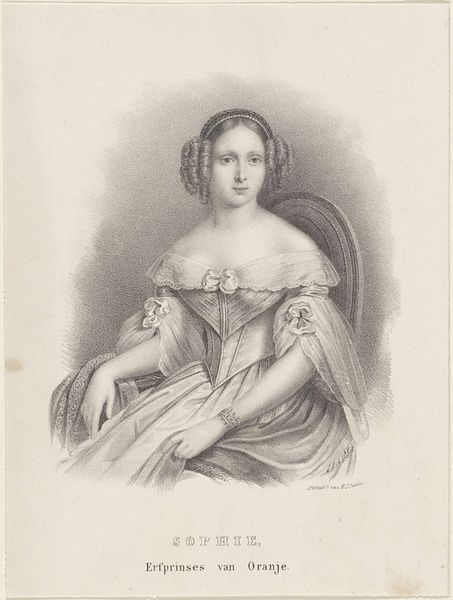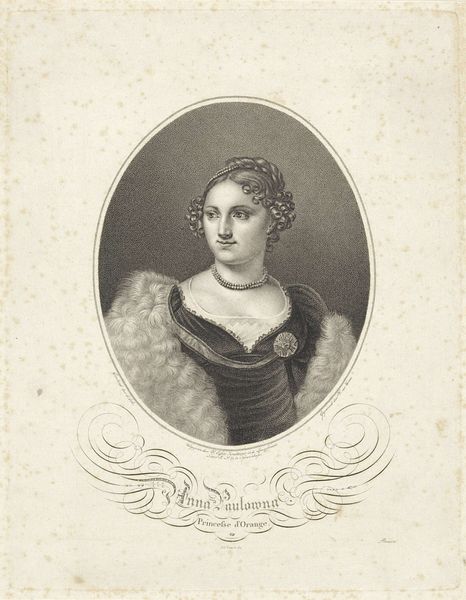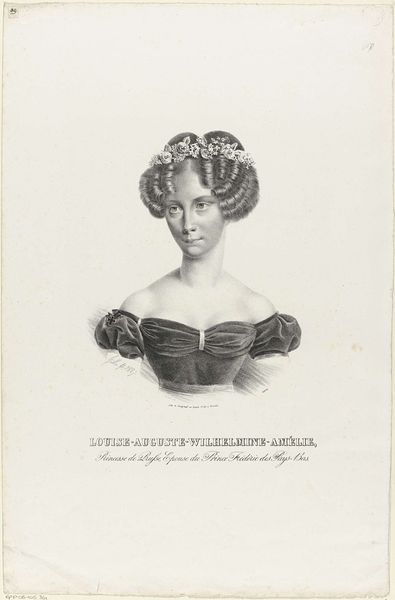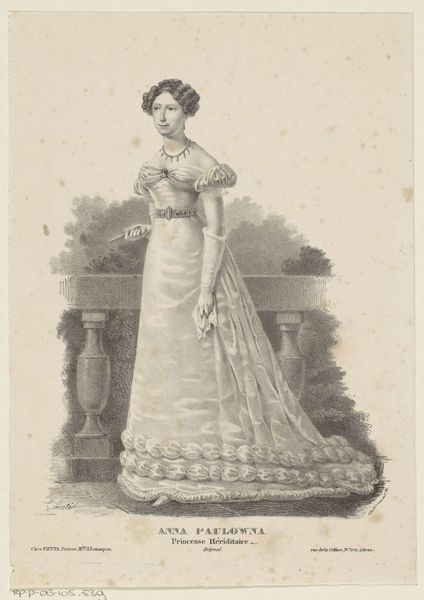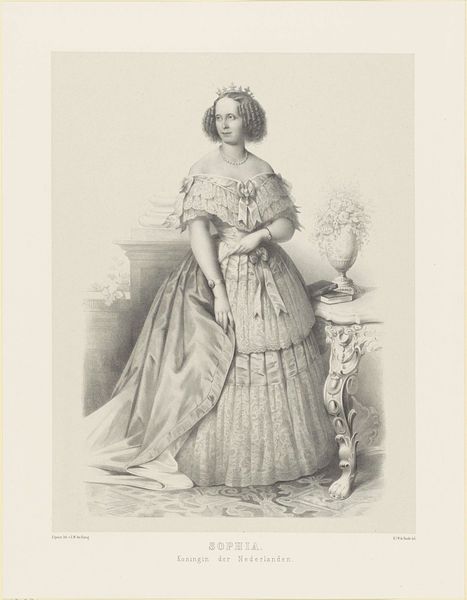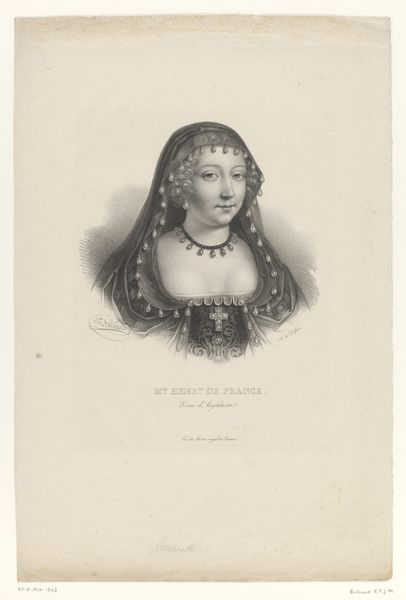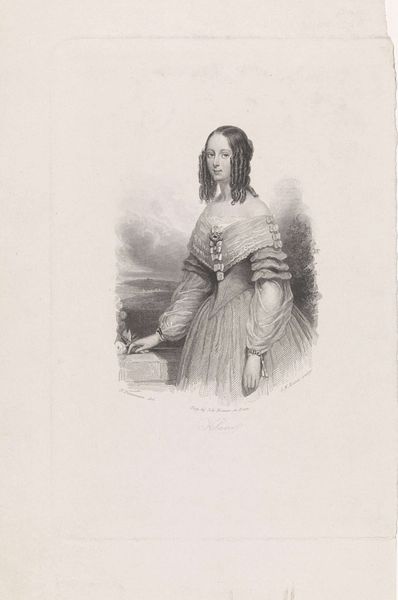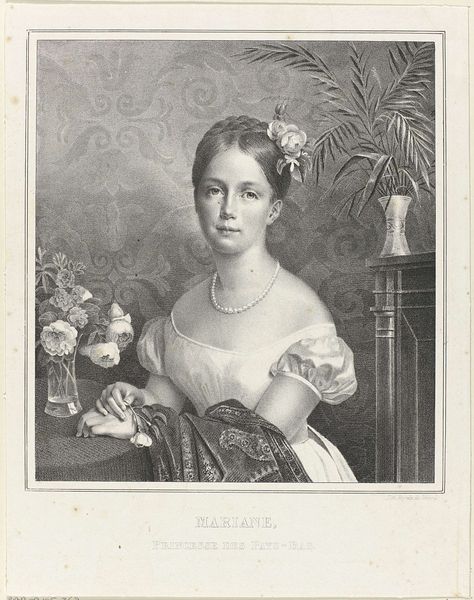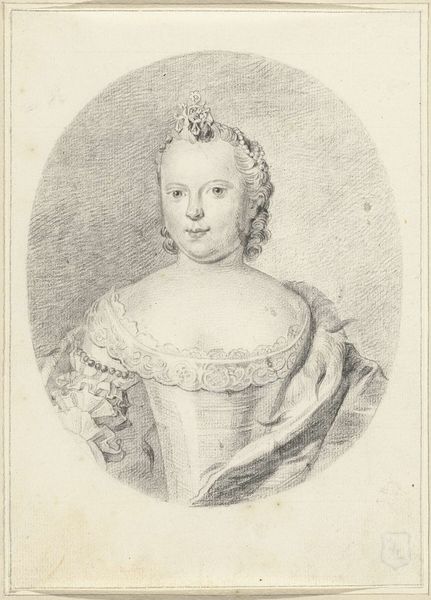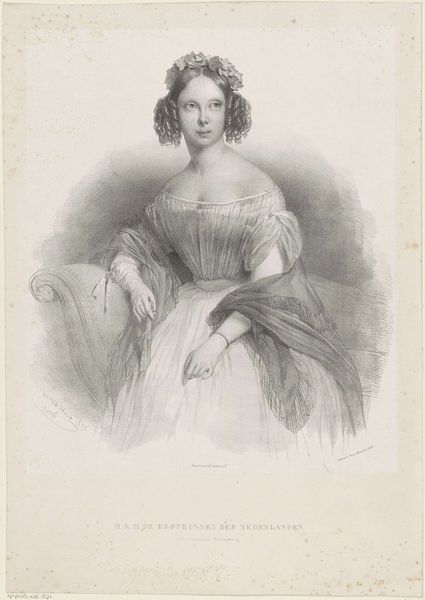
drawing, pencil
#
portrait
#
pencil drawn
#
drawing
#
pencil sketch
#
figuration
#
pencil drawing
#
pencil
#
portrait drawing
#
academic-art
#
realism
Dimensions: height 408 mm, width 318 mm
Copyright: Rijks Museum: Open Domain
Curator: Before us is a pencil drawing, "Portret van Sophie, prinses der Nederlanden," dating from 1840 to 1899. It’s unsigned and therefore attributed to Anonymous, from the Rijksmuseum collection. Editor: The softness of the pencil lends her a certain vulnerability, doesn't it? The detail in the lace is quite striking though. The overall impression is somewhat wistful, even melancholic. Curator: I find it fascinating how portraits of royalty often functioned as propaganda tools, shaping public perception. Consider the socio-political role of Sophie as a figurehead within the Dutch monarchy. Editor: True, but here, the execution speaks to something beyond mere representation. Notice the delicate shading around her eyes and mouth. The artist masterfully conveys the texture of her skin. It feels very human. Curator: Indeed. Yet, that very “humanity” is carefully constructed. Her posture, the meticulously rendered details of her attire – these all contribute to an image of idealized aristocratic femininity, which at that time reinforced established power dynamics and royal bloodlines. Editor: I agree, the trappings are there. But look closely – there's a faint unease in her gaze. The artist has captured something subtly subversive within the conventional framework. Also note, it’s unfinished around the bottom, which provides a snapshot of a process that's usually invisible in painted portraits. Curator: I see your point. What appears to be a straightforward portrait engages in subtle narrative creation, maybe providing a commentary on court life or a certain constraint she had, that’s really quite impressive for what it intends to represent. Editor: Ultimately, the strength of this piece is that it doesn't allow us to fully categorize it. We are both asked to admire the sitter but also engage a wider scope through how the work is composed. Curator: Precisely! I leave appreciating how viewing art through both a historical lens and a close analysis of technique enables such complex ideas and varied arguments.
Comments
No comments
Be the first to comment and join the conversation on the ultimate creative platform.

